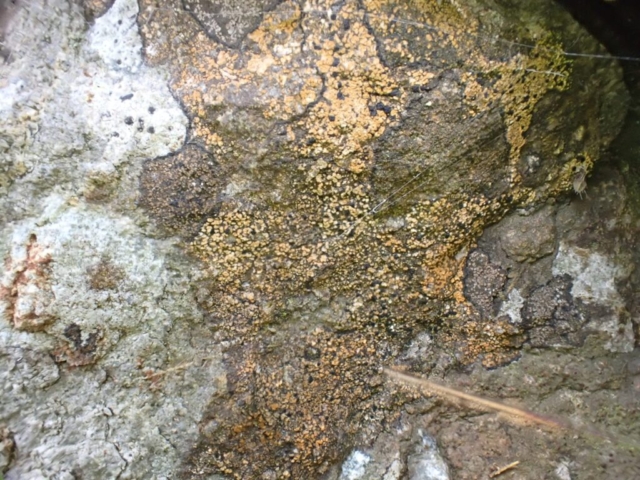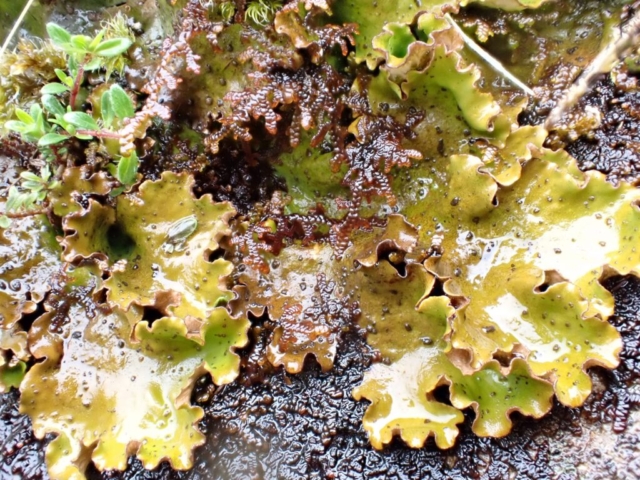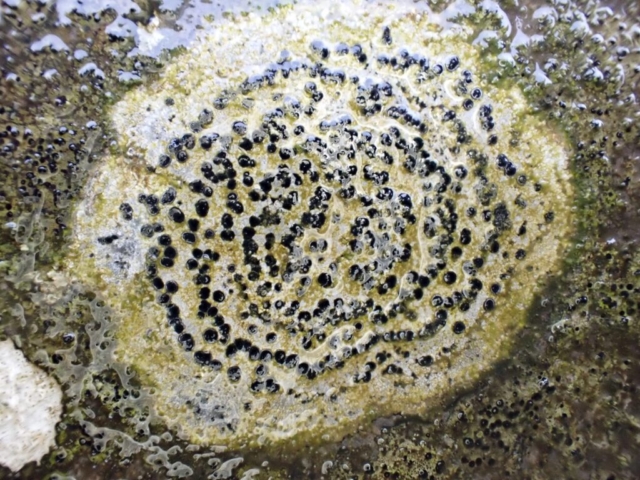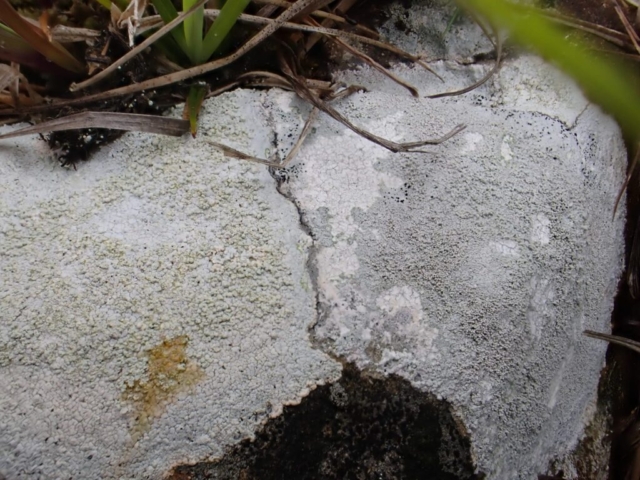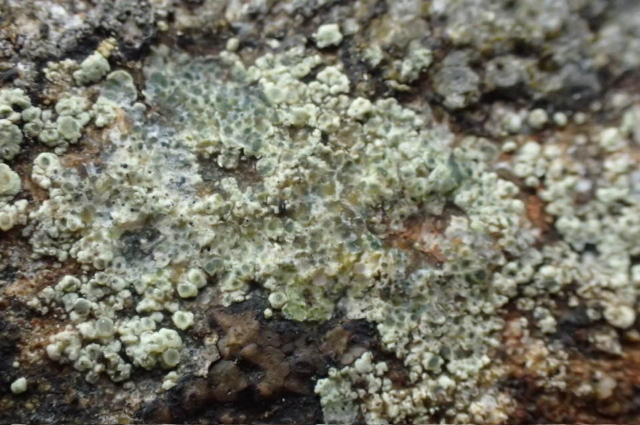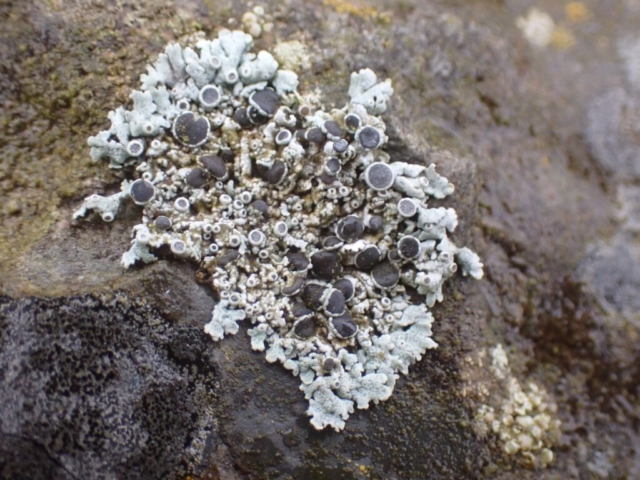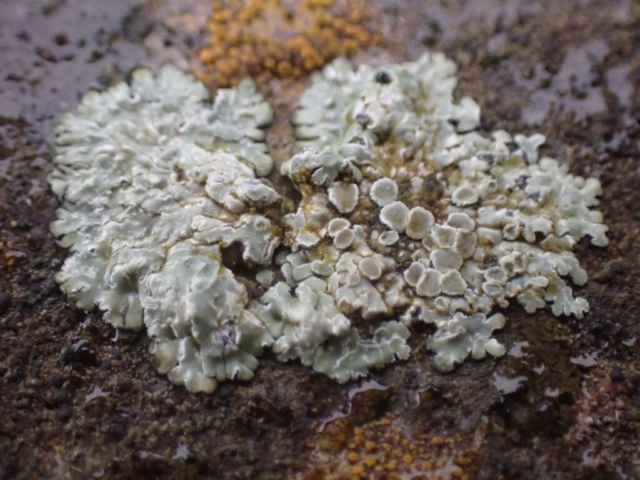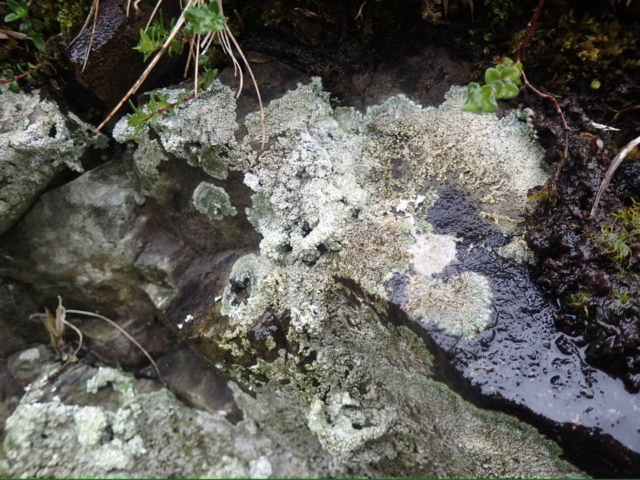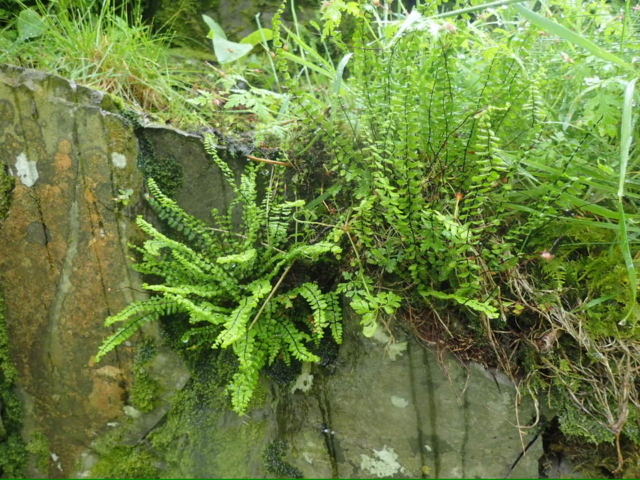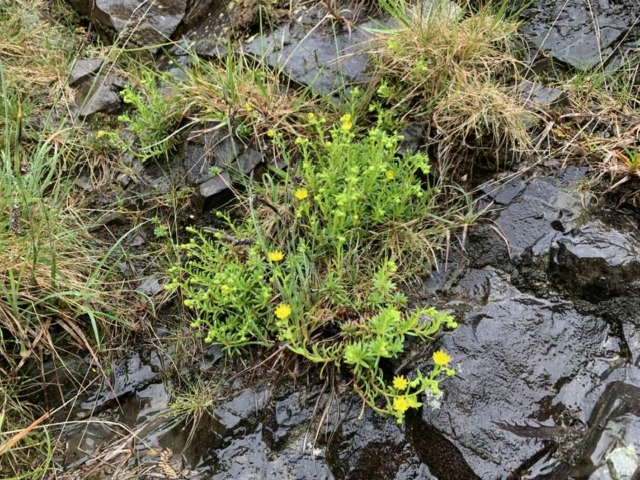The forecast was wet and that’s how it turned out for this exploration of an upland valley cutting east into the Howgill Fells. At least at the start we had an hour without precipitation during which time we got about 200m from the road. Disconcertingly, we were in VC65 North Yorkshire the whole time as the boundary runs down the centre of the beck.
The fear beforehand had been that there wouldn’t be enough lichen interest as it was apparent there wasn’t much visible rock in the lower reaches of the gill, other than boulders in the beck. However, there were very small outcrops of Silurian sedimentary bedrock protruding through the turf. These were enough to show that there was a significant basic element according to the lichens, Peltigera leucophlebia spotted later on being the most striking. This was also borne out by John’s observation of Green spleenwort and Yellow saxifrage, indicator plant species for alkalinity. But the smattering of yellow Rhizocarpon geographicum and Porpidia species showed at least some rock was more acidic – were we having the best of both worlds?
A boulder in the beck had a good ornithocoprophilous community – Protoparmeliopsis muralis and Physcia aipolia, the latter normally on bark, were there as well as tiny fruticose Xanthoria ucrainica and the only thallus of the nitrophilous X parietina seen during the visit. Physcia tenella and P adscendens were also there. The saxicolous crusts with aquatic leanings Ionaspis lacustris and Rhizocarpon lavatum were found, as well as Rhizocarpon petraeum with concentric rings of apothecia. Trapelia placodioides, another indicator of less acidic rock, showed a good C+ red reaction. Banks of shingle bordered the beck where occasional flood disturbance keeps the vegetation down and here there were terricolous Cladonia spp with Peltigera membranacea and P hymenina. A willow and hawthorn which had managed to survive by growing out of vertical rock gave us a few corticolous species, but these were the only trees seen. We might have expected some jelly lichens but saw none, though it was hard to tell what was on some of the very wet rocks. Nor did we find the Dermatocarpon which had been seen in this monad previously.
Another species usually on trees was seen up the slope as we headed back. Lepra albescens was growing on exposed bedrock and spreading over bryophytes. LGBI3 says “rarely on weakly basic siliceous rocks, porous sandstones, sometimes overgrowing mosses and plant detritus on the ground”. All chemical tests on the specimen taken proved negative which is right for this species.
Several stonefly exuvia were found on rocks by the beck. Paul pointed out that their presence indicates good water quality as these aquatic insects are the first to disappear when a watercourse is polluted. The dipper suggested reasonable water quality too.
After lunch under the dripping hawthorn we soldiered on, trying to believe that the rain had eased. But with dampness seeping through waterproofs, and further precipitation setting in, we decided to head back to the cars, all of half a mile away. White water was visible in the steeper sections of beck higher up when we looked back. It’s definitely a place to be revisited on a dry day.
Text: Caz Walker
Photos: John Adams, Paul Hanson, Pete Martin


